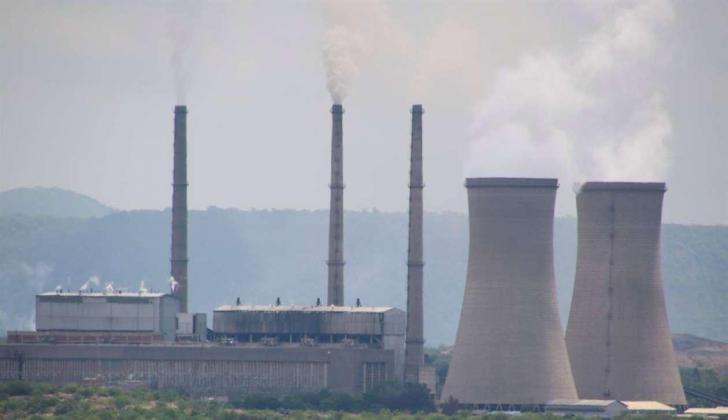News / National
Zimbabwe Energy Minister reveals shocking decline in electricity generation
14 Nov 2024 at 15:25hrs | Views

Zimbabweans face unrelenting power outages, with homes and businesses left without electricity for over 18 hours daily. The crisis stems from failing infrastructure at Hwange Thermal Power Station and critically low water levels at Kariba Dam, prompting public frustration and urgent calls for action from the government.
Energy and Power Development Minister Edgar Moyo addressed Parliament on Wednesday, attempting to clarify the worsening electricity supply situation. Responding to questions from Engineer Leslie Mhangwa, Chair of the Energy Parliamentary Portfolio Committee, Moyo acknowledged significant dysfunction at Zimbabwe's main power generation sites.
"Currently, at Hwange 7 and 8, we are generating 640 megawatts," Moyo said. "At Hwange Stages 1 and 2, however, we are only producing 260 megawatts due to breakdowns, and we're operating with just three functional units."
The situation is compounded by drastically reduced hydropower output at Kariba Dam, which Minister Moyo attributed to overuse and low water reserves. "In Kariba, we could generate up to 300 megawatts in winter. Now we're down to 100 megawatts, as we've depleted most of the 8.4 billion cubic meters allocated for this year. We're left with about 1 billion cubic meters, which can support only 100 megawatts until year's end."
Discrepancies in power generation reports added to concerns. Mhangwa noted specific days when Zimbabwe Power Company (ZPC) reported generating over 1,100 megawatts, yet extensive load shedding continued. "On 4 August, we generated 1,128 megawatts; on 29 August, 1,108," he noted. "But today, with supposedly more power generated, load shedding has worsened."
Minister Moyo explained these fluctuations partly resulted from solar power variations, which vary daily. "Solar power, by nature, is intermittent, with output fluctuating from 20 to 70 megawatts depending on climate conditions," he said.
The power crisis has led to unequal electricity distribution, with certain "strategic" areas exempt from load shedding. This policy, aimed at supporting key services like hospitals, has inadvertently left surrounding neighborhoods with extended power access, while others face prolonged blackouts.
MP John Kuka raised concerns about fairness, asking, "What measures are in place to ensure equitable power distribution?" Minister Moyo explained that strategic areas, including hospitals, are prioritized. "For instance, areas around Mpilo Hospital in Bulawayo benefit from power continuity due to their shared supply line," Moyo said.
Calls for urgent government intervention came from MPs like Corban Madzivanyika, who urged the Finance Ministry to allocate resources toward repairing Hwange's ageing units. Dr. Thokozani Khupe proposed that Moyo present a comprehensive ministerial statement, laying out plans to address the crisis. "The Minister needs to explain publicly what the government is doing to resolve this issue," Khupe said.
A ministerial statement is expected next week, detailing the government's plans for infrastructure upgrades, crisis management, and alternative energy options. Yet, for many Zimbabweans, such promises offer limited relief amid worsening blackouts.
Witness Bhebhe, a Bulawayo resident, voiced the frustration shared by many: "It's stressful. Some can access electricity at work, but what about those who stay home all day? Children can't watch TV, and everyone at home is frustrated."
As the power supply crisis escalates, citizens await effective solutions to restore stability and meet the country's pressing energy needs.
Energy and Power Development Minister Edgar Moyo addressed Parliament on Wednesday, attempting to clarify the worsening electricity supply situation. Responding to questions from Engineer Leslie Mhangwa, Chair of the Energy Parliamentary Portfolio Committee, Moyo acknowledged significant dysfunction at Zimbabwe's main power generation sites.
"Currently, at Hwange 7 and 8, we are generating 640 megawatts," Moyo said. "At Hwange Stages 1 and 2, however, we are only producing 260 megawatts due to breakdowns, and we're operating with just three functional units."
The situation is compounded by drastically reduced hydropower output at Kariba Dam, which Minister Moyo attributed to overuse and low water reserves. "In Kariba, we could generate up to 300 megawatts in winter. Now we're down to 100 megawatts, as we've depleted most of the 8.4 billion cubic meters allocated for this year. We're left with about 1 billion cubic meters, which can support only 100 megawatts until year's end."
Discrepancies in power generation reports added to concerns. Mhangwa noted specific days when Zimbabwe Power Company (ZPC) reported generating over 1,100 megawatts, yet extensive load shedding continued. "On 4 August, we generated 1,128 megawatts; on 29 August, 1,108," he noted. "But today, with supposedly more power generated, load shedding has worsened."
Minister Moyo explained these fluctuations partly resulted from solar power variations, which vary daily. "Solar power, by nature, is intermittent, with output fluctuating from 20 to 70 megawatts depending on climate conditions," he said.
MP John Kuka raised concerns about fairness, asking, "What measures are in place to ensure equitable power distribution?" Minister Moyo explained that strategic areas, including hospitals, are prioritized. "For instance, areas around Mpilo Hospital in Bulawayo benefit from power continuity due to their shared supply line," Moyo said.
Calls for urgent government intervention came from MPs like Corban Madzivanyika, who urged the Finance Ministry to allocate resources toward repairing Hwange's ageing units. Dr. Thokozani Khupe proposed that Moyo present a comprehensive ministerial statement, laying out plans to address the crisis. "The Minister needs to explain publicly what the government is doing to resolve this issue," Khupe said.
A ministerial statement is expected next week, detailing the government's plans for infrastructure upgrades, crisis management, and alternative energy options. Yet, for many Zimbabweans, such promises offer limited relief amid worsening blackouts.
Witness Bhebhe, a Bulawayo resident, voiced the frustration shared by many: "It's stressful. Some can access electricity at work, but what about those who stay home all day? Children can't watch TV, and everyone at home is frustrated."
As the power supply crisis escalates, citizens await effective solutions to restore stability and meet the country's pressing energy needs.
Source - cite














































